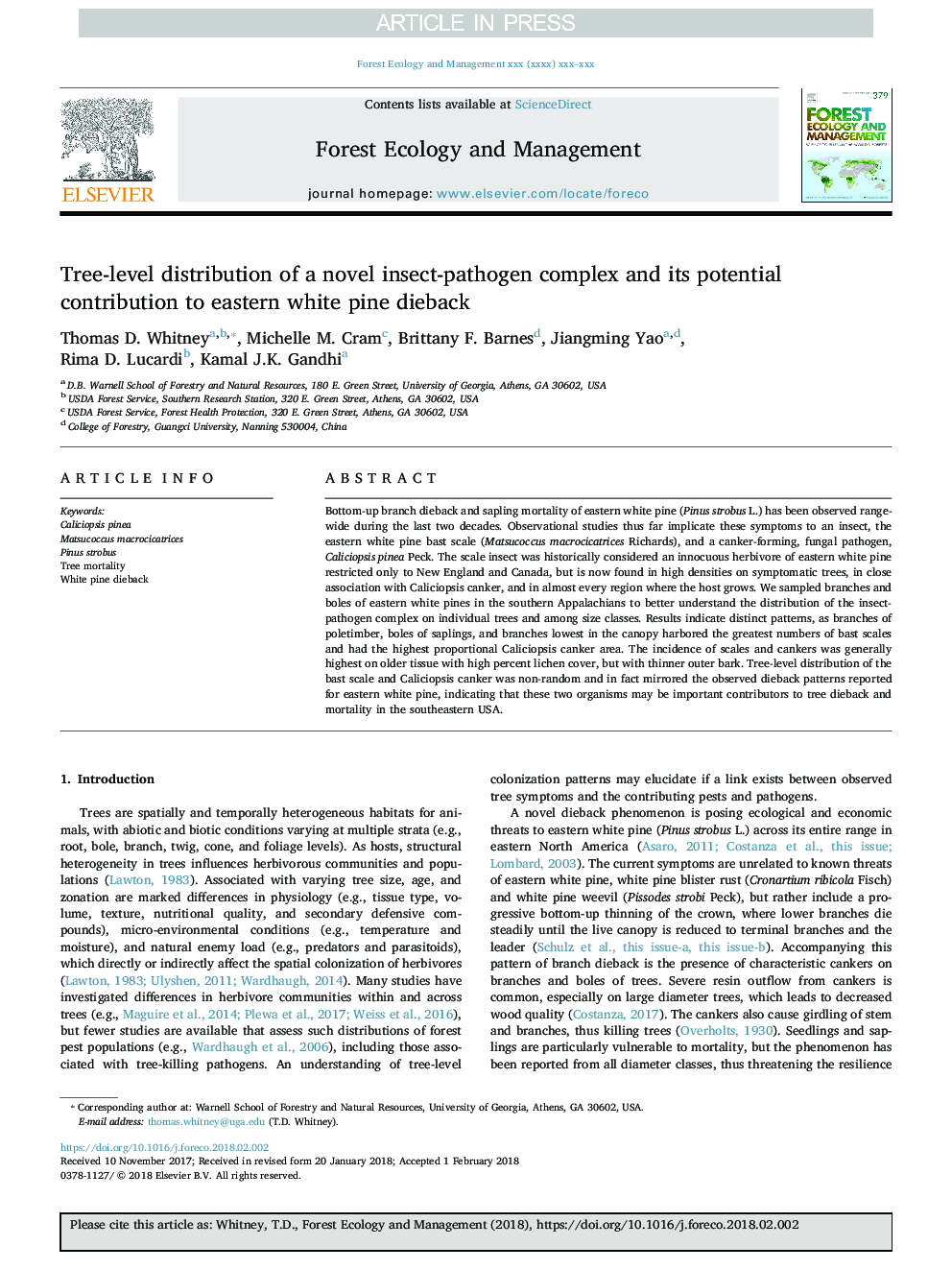| Article ID | Journal | Published Year | Pages | File Type |
|---|---|---|---|---|
| 6541636 | Forest Ecology and Management | 2018 | 10 Pages |
Abstract
Bottom-up branch dieback and sapling mortality of eastern white pine (Pinus strobus L.) has been observed range-wide during the last two decades. Observational studies thus far implicate these symptoms to an insect, the eastern white pine bast scale (Matsucoccus macrocicatrices Richards), and a canker-forming, fungal pathogen, Caliciopsis pinea Peck. The scale insect was historically considered an innocuous herbivore of eastern white pine restricted only to New England and Canada, but is now found in high densities on symptomatic trees, in close association with Caliciopsis canker, and in almost every region where the host grows. We sampled branches and boles of eastern white pines in the southern Appalachians to better understand the distribution of the insect-pathogen complex on individual trees and among size classes. Results indicate distinct patterns, as branches of poletimber, boles of saplings, and branches lowest in the canopy harbored the greatest numbers of bast scales and had the highest proportional Caliciopsis canker area. The incidence of scales and cankers was generally highest on older tissue with high percent lichen cover, but with thinner outer bark. Tree-level distribution of the bast scale and Caliciopsis canker was non-random and in fact mirrored the observed dieback patterns reported for eastern white pine, indicating that these two organisms may be important contributors to tree dieback and mortality in the southeastern USA.
Keywords
Related Topics
Life Sciences
Agricultural and Biological Sciences
Ecology, Evolution, Behavior and Systematics
Authors
Thomas D. Whitney, Michelle M. Cram, Brittany F. Barnes, Jiangming Yao, Rima D. Lucardi, Kamal J.K. Gandhi,
